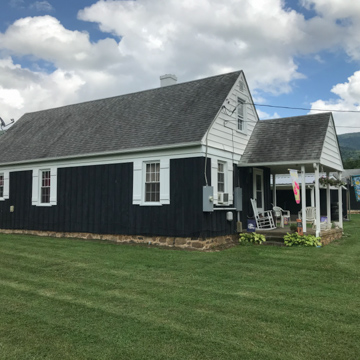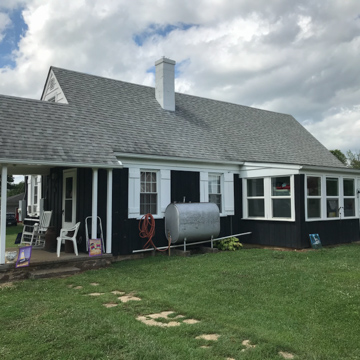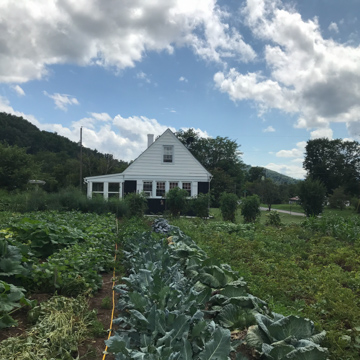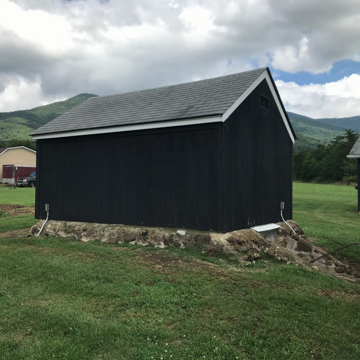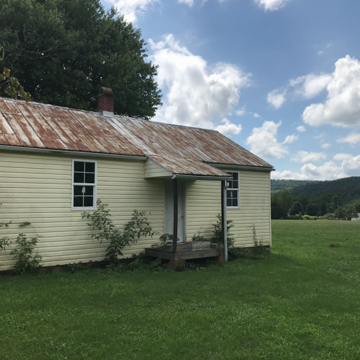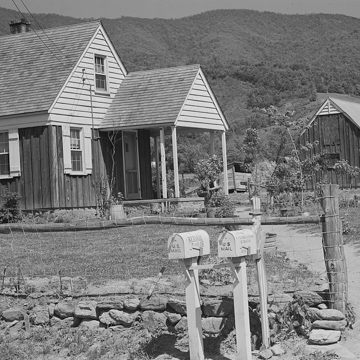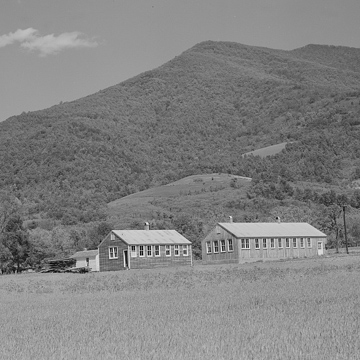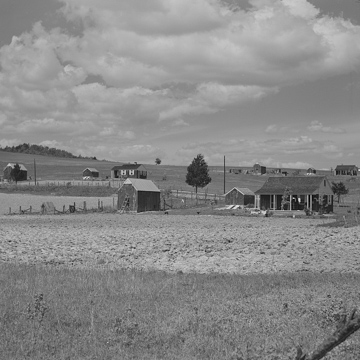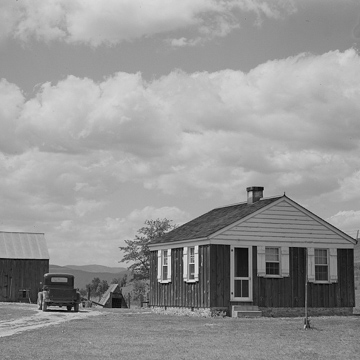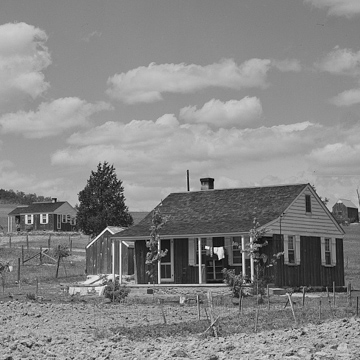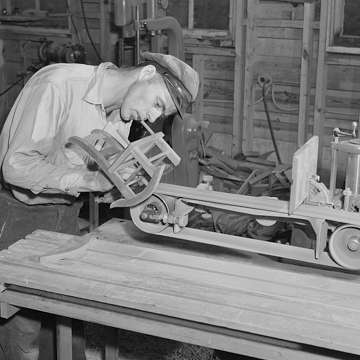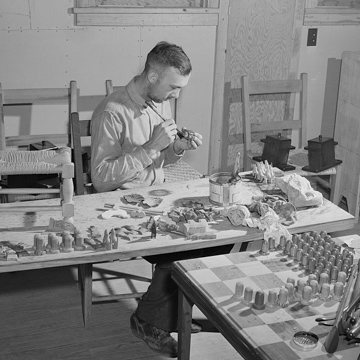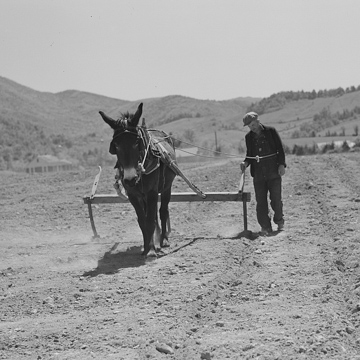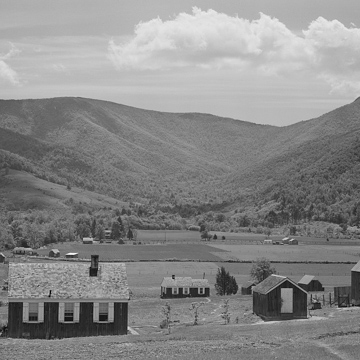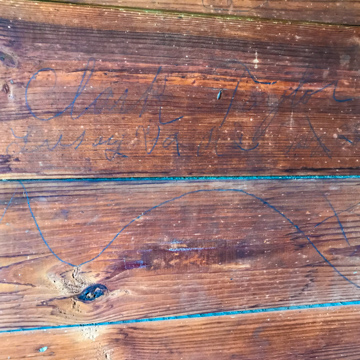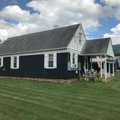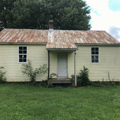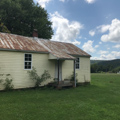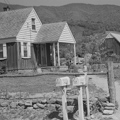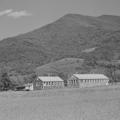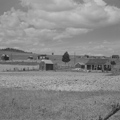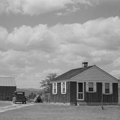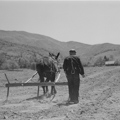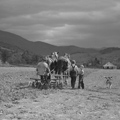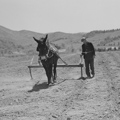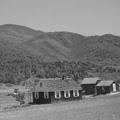The establishment of Shenandoah National Park displaced many mountain families, some of whom were provided housing in the federal government resettlement community of Ida, an important New Deal–era development in Page County's history. Stone fences border many of the properties that make up the group of nearly thirty resettlement houses. Clark and Minnie Taylor, formerly of Jollett Hollow, moved into their government-owned and -designed house at 121 Homestead Road in 1937. Their gable-fronted house is one of the best-preserved resettlement houses in Ida. It retains creosoted board-and-batten siding, decorative white-painted board shutters, a cobblestone foundation, and a gabled entrance stoop. Next to the house stands a 1930s stone cellar for keeping fruits and other food items, with a board-and-batten storage shed above.
The New Deal philosophy of social betterment lies behind the establishment of the Ida Handicraft Shop on Ida Road. Men in the Ida community were encouraged to use the shop to make carved wooden figurines and other so-called mountain crafts. Phil Dinges, a contractor who built the Ida resettlement houses, served as foreman at the shop. The one-story frame workshop, now with vinyl siding, has the gable-front form of a traditional country store. Behind the shop stands a workshop that was used by area women for knitting and other activities. The gabled frame building has novelty weatherboard siding and multiple windows, the latter to provide ample light for the close work that was carried on inside. A nearby shed housed mechanisms for controlling water flow and pressure to the Ida resettlement homes; the homes boasted indoor plumbing supplied by a reservoir in a nearby hollow.


